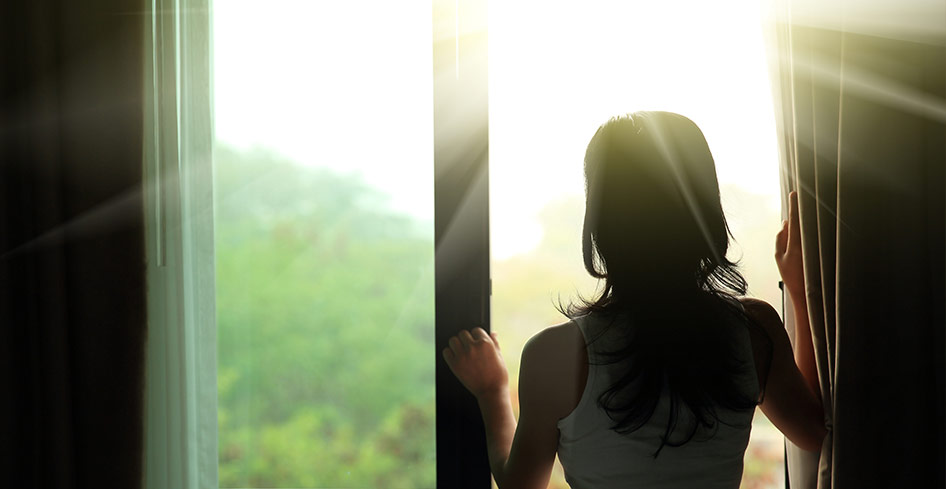Sociology in the service of architecture, or how to design comfortable buildings

The role that our buildings play in our comfort, our wellbeing, and even our health today is no secret and has been proved by many scientific studies and publications.1 So how do we ensure that our buildings and indoor spaces provide us with the comfort we desire?
To enlighten us, we spoke with Hélène Subrémon, habitat sociologist at Saint-Gobain Research.
What role can sociologists play as we design or rethink our buildings?
Hélène Subrémon (H.S.): Human sciences have always looked at how societies occupy a territory, design their habitat, and arrange their homes, from both a technical and a symbolic standpoint. These behaviors are simultaneously the translation of rules for living together and of a shared-habitat culture. To identify the specific characteristics of a society, human science researchers conduct field surveys, implementing protocols for observing and questioning the occupants of a space. In industrial groups related to a habitat, surveys are used to determine the link between materials and comfort, between construction design and perceptions of wellbeing.
And this link is not obvious! For example, if you ask people what the sources of comfort are in their homes, they will most likely not mention fiberglass, windows, or drywall. They will instead talk about space, light, quiet, views, practicality, placement, things that “go together,” geographic location, ease of daily living, etc.—many things to which the building can contribute. My role is to identify the invisible link between the elements perceived by a person and the building and its materials.

Describing daily comfort is not an obvious thing, since comfort is both perceived and sometimes subjective. For instance, acoustic, visual, thermal and air quality are not seen but are perceived. The role of sociology is to focus on the needs and expectations expressed by people, and also to look at how they live in a space. Unlike other approaches, which may place individuals in a controlled environment and ask them to express what they are feeling, sociology observes, analyzes, and identifies the “little things” that are part of daily life, looking for subtle signals. A sociologist looks at how a space is arranged to make it comfortable, how the furnishings are positioned and oriented; she notices the addition of a green plant and the care given to it, the choice to open or close a door or window, as indicators of experiences lived and as components of comfort.
How do you explain the fact that many buildings today do not satisfy their occupants in terms of comfort?
H.S.: Real estate is such speculative object that it is often subject primarily to financial logic and required to comply with technical standards. Until very recently, the inhabitants just had to adapt to that. In addition, real estate development pressure in the major European cities forced builders to compromise, in particular with regard to comfort (e.g.: smaller spaces, less window surface, etc.), in order to reduce construction costs. Structures were built simply to meet a basic need—housing people—without necessarily considering their wellbeing and fulfillment. In other words, attention was focused primarily on regulatory and economic factors, while the occupants’ expectations were most often secondary.

What pushed builders in recent years to reconsider the comfort of occupants as a key concern?
H.S.: In western countries, consideration of comfort in buildings was driven by energy performance issues. Regulatory changes with respect to energy consumption in the building made it possible to consider the occupants and to address other areas such as acoustics, air quality, visual comfort, etc. Today, there is still a lot of work to be done on how to allow for and measure these comfort indicators, but no one denies their importance.
In addition, we are also beginning to notice that comfort can contribute to the economic performance of real estate operations. This is especially true today for offices, but also for housing over the long term, since that sector most often involves buildings with stable occupancy.
Does natural light appear to be an important parameter for occupant comfort?
H.S.: Through my surveys I’ve been able to observe that the desire for light is the first need expressed spontaneously by people, in all types of buildings (housing, offices, etc.). And one of the very interesting things about the visual comfort provided by the presence of natural light is that it can compensate for other uncomfortable conditions. For example, in a space that is cramped, has no appreciable view to the outside, or is deficient in other ways, if we can play up the openings, the quality of the windows, or any type of feature that might allow more natural light to enter, this can reduce our perception of discomfort.

Sociology in the service of architecture: is this a new concept?
H.S.: Actually, architecture and the human sciences have been related for a very long time.
In the 1970s, the arrival of modern architecture and the industrialization of construction processes led to a very strong emphasis on the human sciences, especially because this architecture also affected society. We became interested in the perception of architecture, with constructions becoming uniform, throughout Europe and North America.
And today, architects and urbanists are still working with sociologists as part of a participatory approach. This practice is also very evident among building owners looking to refurbish their housing units or construct experimental buildings.
Can we expect the use of sociology and surveys to become routine in the buildings of tomorrow?
H.S.: Making this type of approach systematic seems a little ambitious to me. However, we can see that it’s increasing, especially in commercial buildings where they participate in corporate social responsibility programs. Also, for buildings with a commercial function or very high leasing value, as is the case with office space, the link between occupant satisfaction and the building can more easily be valued monetarily and therefore assessed objectively.
The renovation sector seems more conducive to questioning occupants, since it has to give consideration to people who are already present. In new construction, the difficulty is that no one knows who will occupy the buildings. In this case, it is more delicate, but not impossible, to apply social sciences so as to anticipate needs and uses and adapt spaces accordingly. Given this unknown factor, some architects project their own vision of what a workspace, living space, etc. should be. This can lead to types of structures, forms, combinations of colors and materials that don’t coincide with occupant preferences.

Do you think we will eventually succeed in creating completely comfortable buildings?
H.S.: I don’t think we’ll reach the point of designing 100% comfortable environments as an engineer would define them, i.e., with optimal physical conditions in a place. The diversity of individuals, uses, and lifestyles means that you’ll never find a common type of construction that would satisfy everyone. And that’s fine! In addition, there will always be a gap between construction styles, and the solutions that can be offered, and people’s expectations, which are constantly evolving. The goal is not to totally satisfy people’s needs, but to reduce that gap. And the gap that remains will in fact be the expression of our diversity as individuals, our social and cultural diversity.
And in the end, people adapt, however small may be the opportunity to make their space their own, such as by adding plants in their office to make up for a lack of natural light, an unsatisfying view, or an office with a monotone color scheme. This room to maneuver allows us to maintain a space for freedom of expression, diversity, culture, and personality, which is absolutely vital for people and enables to adapt to some discomforts!
- The business case for green building, World Green Building Council Report, 2013